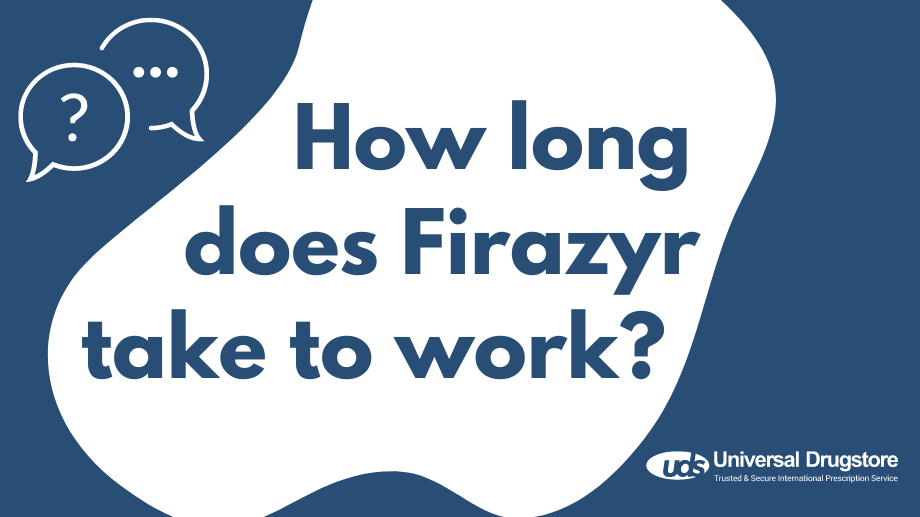How long does Firazyr take to work?

Firazyr is an FDA-approved medication given by subcutaneous injection to treat hereditary angioedema (HAE). HAE is a genetic condition that causes you to have sudden and severe episodes (known as attacks) of swelling. HAE attacks can occur on the face, hands, feet, throat, airway, and intestinal tract, causing discomfort and pain. Acute HAE attacks can be serious and life-threatening if they involve the throat (laryngeal attack). This condition and swelling are different from an allergic reaction.
In clinical trials, Firazyr worked quickly to relieve symptoms of an HAE attack. Across the 3 trials, Firazyr had a median time (average time) of 2.0 to 2.3 hours for a 50% reduction in symptoms. This was compared to almost 20 hours in those who took a placebo. In one trial the average time to almost complete symptom relief was 8 hours compared to 36 hours for those taking a placebo.
Keep reading to learn more about how Firazyr works, how often you can take it, and other important information.
Firazyr FAQs
What does Firazyr treat?
Firazyr (icatibant) is a brand-name self-administered injection that is manufactured by Shire, which is now part of Takeda Pharmaceuticals. It is a portable therapy that is FDA-approved for the treatment of acute attacks of hereditary angioedema (HAE) in adults 18 years of age and older.
How does Firazyr work?
The active ingredient in Firazyr, icatibant acetate, is a bradykinin B2 receptor antagonist used in the treatment of HAE. People with HAE either have low levels of a protein called C1 esterase inhibitor in their blood or it does not work properly. Because of this, it causes another protein to trigger the release of bradykinin. Bradykinin is thought to be responsible for the swelling seen in acute HAE attacks. By blocking the bradykinin B2 receptor, Firazyr stops bradykinin from working which helps treat the symptoms of an acute attack of HAE.
How long does Firazyr last?
Firazyr has a short half-life of around 1.4 hours so the majority of your dose is eliminated after about 7 hours. According to the dosing, one Firazyr injection should last for at least 6 hours.
When should I take Firazyr?
You or your caregiver should administer Firazyr as soon as you notice any symptoms of an HAE attack. It is given as a slow injection, over at least 30 seconds, subcutaneously (under the skin) in your abdominal area. You should be sure to read the see step-by-step instructions for injecting Firazyr that come with the medication before giving your first dose.
How often can you take Firazyr?
In clinical studies, 9 of 10 HAE attacks were treated with a single dose of Firazyr. However, if your symptoms don’t go away or another attack occurs after your first dose of Firazyr, you can give additional doses at least 6 hours apart. You should not give more than 3 doses of Firazyr in a 24-hour period.
What doses are available for Firazyr?
Firazyr solution is available in a single-use, 30 mg/3 ml prefilled syringe with a grey plunger and needle that can be used for self-administration. It will also come with needle caps for covering the needle in case you need to use Firazyr and don’t have access to a sharps container.
What drug interactions are there with Firazyr?
When Firazyr is taken with other medications, it can change how they work or make some side effects more likely or severe. You should ask your healthcare provider if any of the prescription drugs, over-the-counter (OTC) medications, vitamins, or supplements you take may interact with Firazyr, including:
- Angiotensin-converting-enzyme (ACE) inhibitors such as benazepril and lisinopril
What are the possible side effects of Firazyr?
The most common side effects of Firazyr include:
- Injection site reactions
- Fever
- Rash
- Abnormal liver enzyme levels
- Dizziness
Sometimes, Firazyr can cause more serious side effects, including:
- Serious, life-threatening allergic reactions including anaphylaxis (swelling of your face, lips, or tongue, hives, and trouble breathing)
Contact your healthcare professional for medical advice about any possible adverse effects you experience while taking Firazyr. You can also read Firazyr’s prescribing information to learn more. You can report your adverse effects to the FDA at 1-800-FDA-1088 or www.fda.gov/medwatch.
Are there any precautions or contraindications with the use of Firazyr?
Before beginning Firazyr, make sure your healthcare provider is aware of your medical conditions, including:
- Are taking an ACE inhibitor
- Are pregnant or plan on becoming pregnant
- Are breastfeeding, as it is not known if Firazyr is found in breast milk
Sources
- Firazyr: https://www.firazyr.com/about-firazyr/why-firazyr
- Firazyr Package Insert: https://www.shirecontent.com/PI/PDFs/Firazyr_USA_ENG.pdf
- Drugs: https://www.drugs.com/medical-answers/long-firazyr-work-3540461/
- Medical News Today: https://www.medicalnewstoday.com/articles/firazyr#about
- Medscape: https://reference.medscape.com/drug/firazyr-sajazir-icatibant-999681